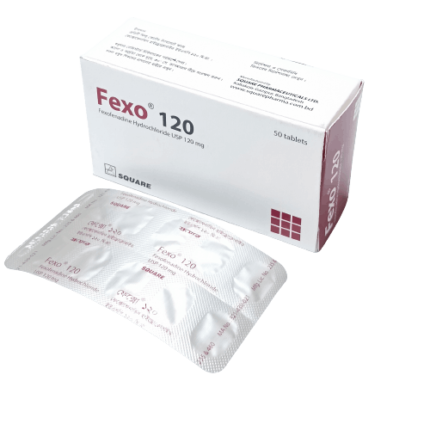Ipramid Respirator Solution
130.00৳ Bottle (20ml)
- Nebuliser Solution: Effective for treating reversible bronchospasm in COPD and acute/chronic asthma when used with beta-2 agonists. Administered 3-4 times daily, with a maximum daily dose of 2 mg.
- Inhaler: Provides bronchodilation for chronic reversible airway obstruction, including asthma and COPD. Typically used 1-2 puffs three to four times daily, with a maximum of 12 puffs in 24 hours.
- Pharmacology: Ipratropium Bromide, an anticholinergic, inhibits acetylcholine to reduce bronchoconstriction and ease breathing.
- Precautions: Use with caution in patients with narrow-angle glaucoma or prostatic hyperplasia. Avoid eye contact and follow proper inhaler technique.
 Brand
Brand
|
Beximco Pharmaceuticals Ltd |
|---|---|
 Generics
Generics
|
Ipratropium Bromide |
 Type
Type
|
Respirator Solution |
Indications
Nebuliser Solution: Used to manage reversible bronchospasm related to chronic obstructive pulmonary disease (COPD). It is also effective in treating reversible airway obstruction in both acute and chronic asthma when combined with inhaled beta-2 agonists.
Inhaler: Acts as a bronchodilator for chronic reversible airway obstruction, including asthma and chronic obstructive pulmonary disease (COPD) such as chronic bronchitis and emphysema. Also effective for the treatment of acute reversible airway obstruction.
Pharmacology
Ipratropium Bromide, a quaternary ammonium compound with anticholinergic properties, works by inhibiting vagal reflexes. It does this by blocking acetylcholine, a neurotransmitter released from the vagus nerve. This action prevents the increase of cyclic guanosine monophosphate (cyclic GMP) levels in bronchial smooth muscle, which helps in reducing bronchoconstriction.
Dosage
Nebuliser Solution:
- Adults (including elderly) and children over 12 years: 250-500 micrograms (1-2 ml) 3 to 4 times daily.
- For acute bronchospasm: 500 micrograms (2 ml). Daily doses should not exceed 2 mg, except under medical supervision.
- Children 6-12 years: 250 micrograms (1 ml) up to 1 mg (4 ml) daily. Dosage intervals are determined by the physician.
- Children 0-5 years (for acute asthma only): 125-250 micrograms (0.5-1 ml) up to 1 mg (4 ml) daily. Administer no more frequently than every 6 hours. Repeated doses can be given until the patient is stable.
The nebuliser solution may be combined with a short-acting beta-2 agonist in the same chamber and should be used immediately after mixing. Discard any unused solution. The solution can be administered using various commercially available nebulizers and may need to be diluted with sterile sodium chloride 0.9% to achieve the desired volume.
Inhaler:
- Adults: Typically 1-2 puffs (20 µg/spray) three to four times daily. Up to 80 µg (4 puffs) may be needed for initial treatment. Do not exceed 12 puffs in 24 hours.
- Children (6-12 years): Usually 1-2 puffs two to three times daily.
- Children (below 6 years): Usually 1 puff (20 µg) three times daily. Administration should be supervised by an adult.
Note: No specific information is available for use in the elderly, but clinical trials have not reported age-specific adverse effects.
Consult your physician for proper dosage and administration.
Administration
Correct use of the inhaler is crucial to ensure medication reaches the lungs effectively. Follow these steps:
- Remove the cap and shake the inhaler vigorously for at least six times.
- If new or unused for over a week, shake well and release one puff into the air to check functionality.
- Exhale fully, hold the inhaler upright, and place the actuator between your teeth with lips sealed around the mouthpiece.
- Inhale deeply and slowly through the mouth while pressing the canister firmly to release the medication.
- Remove the inhaler from your mouth and hold your breath for at least 10 seconds or as long as comfortable.
- If more than one puff is prescribed, wait 1 minute between puffs. Shake the inhaler again and repeat the steps.
- After use, replace the cap and rinse your mouth with water.
- Regularly check technique in a mirror to ensure correct use.
Cleaning Instructions: Clean your inhaler at least once a week. Remove the canister, rinse the actuator and cap in warm water (do not submerge the metal canister), dry thoroughly, and reassemble.
Consult your physician for proper inhaler use.
Interaction
Inhaler: Ipramid has been safely used with other medications such as sympathomimetic bronchodilators, methylxanthines, steroids, and cromolyn sodium commonly used for COPD. There are no comprehensive studies on interactions affecting effectiveness.
Contraindications
Nebuliser Solution: Contraindicated in individuals with known hypersensitivity to atropine, its derivatives, or any product component.
Inhaler: Contraindicated in individuals with hypersensitivity to Ipratropium, Atropine, its derivatives, or those with a history of hypersensitivity to soy lecithin or related products.
Side Effects
Nebuliser Solution:
- Common: Headache, dizziness, cough, inhalation-induced bronchospasm, dry mouth, vomiting.
- Uncommon: Urticaria, tachycardia, rash, itching.
- Rare: Anaphylaxis, eye pain, increased intraocular pressure, palpitations, atrial fibrillation, nausea.
Inhaler:
- Potentially life-threatening effects: Rare idiosyncratic reactions; severe effects are unlikely with metered-dose aerosols.
- Symptomatic effects: Dry mouth, cough, headache, nausea, dizziness, and blurred vision are among the common reactions. Rare effects include glaucoma and allergic-type reactions.
Pregnancy & Lactation
The safety of Ipratropium Nebulizer Solution during pregnancy is not well established. Use only if the benefits outweigh the risks. It is unknown if Ipratropium Bromide is excreted in breast milk, so exercise caution when administering to nursing mothers.
Precautions & Warnings
Nebuliser Solution: Use with caution in patients with narrow-angle glaucoma, prostatic hyperplasia, bladder obstruction, or cystic fibrosis. Avoid contact with eyes to prevent ocular complications.
Inhaler: Avoid spraying into the eyes to prevent vision problems. Seek medical advice if symptoms worsen or do not improve. Avoid using other inhaled medications unless prescribed.
Overdose Effects
Acute overdosage is unlikely. Inhaled doses of 5 mg may cause increased heart rate and palpitations. Higher oral doses have caused anticholinergic side effects but are not severe enough to require specific reversal.
Therapeutic Class
Anticholinergic bronchodilators
Storage Conditions
Store at temperatures not exceeding 25°C. Use a fresh ampoule for each dose and discard any unused solution. Keep the ampoule in its outer carton.













Reviews
There are no reviews yet.